Forensic scientists examine Mob Museum artifacts for evidence of criminal past
Las Vegas Metropolitan Police Department’s Forensic Lab tests Mafia hitman’s weapons
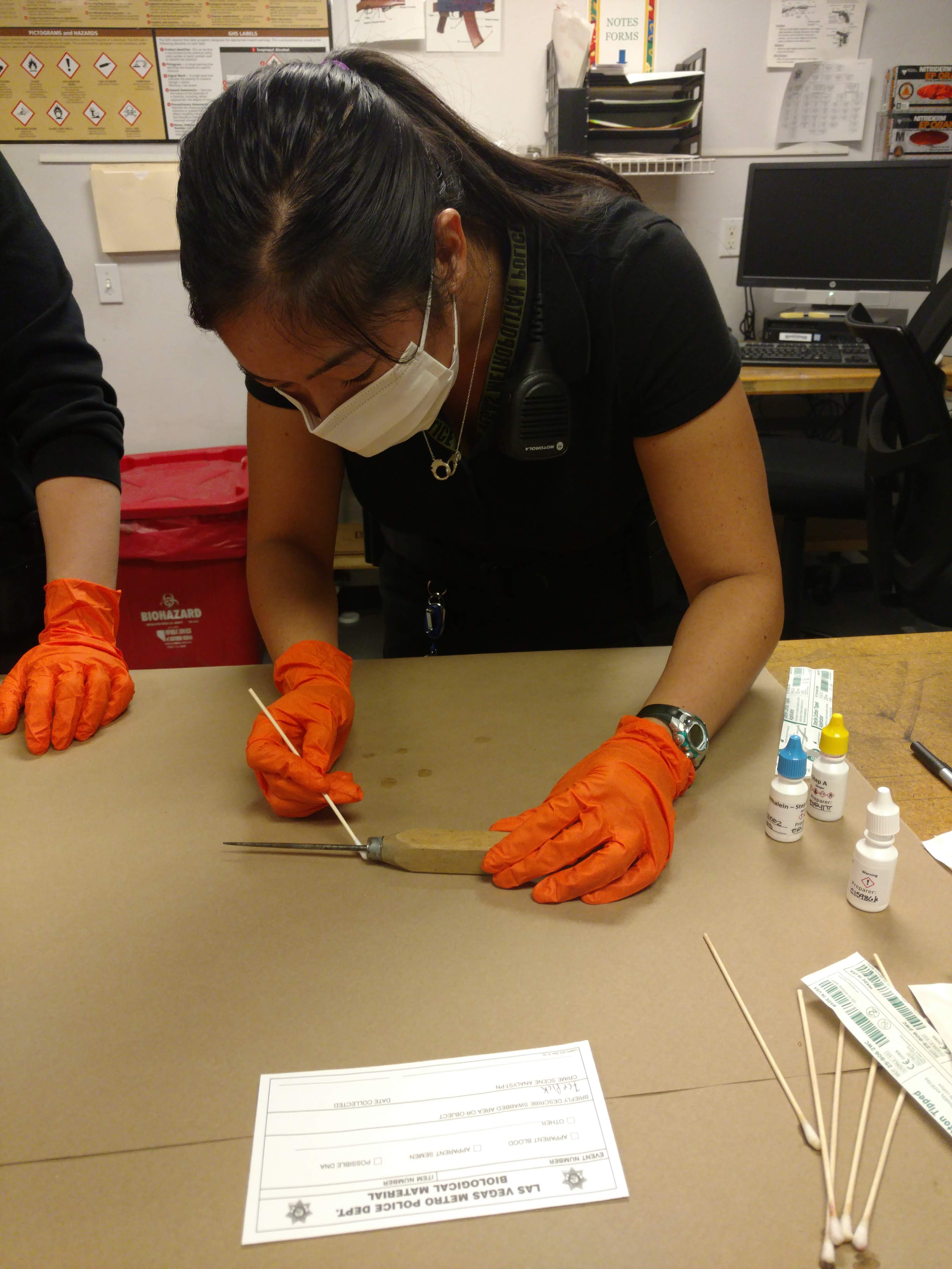
Forensic science, including DNA analysis and other fields related to examining blood found at a crime scene, is a powerful tool for investigating crimes. But it can be extremely time sensitive. As blood dries, it flakes, which makes it challenging to examine and analyze potential murder weapons decades, or even mere days, later.
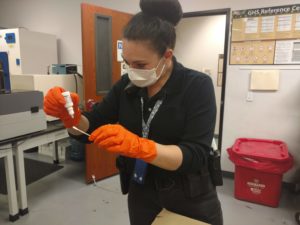
Time was not on the Mob Museum’s side this fall when two of its newest acquisitions, a machete and an ice pick belonging to New York Mafia hitman Roy DeMeo, reached the Museum’s collection. Before they were placed on display, the curatorial team identified areas on both artifacts that could be blood based on color and appearance. If this was in fact blood, it could be at least 35 years old. DeMeo was murdered in 1983 and the weapons had not been used since.
In the 1970s and early ’80s, Roy DeMeo was a prolific hitman for the Gambino crime family. DeMeo began his criminal career as a loan shark before leading a crew of hitmen linked to more than 100 murders. Their victims were often dismembered and buried in a Brooklyn landfill.
The techniques used by the DeMeo crew were introduced by DeMeo himself. He trained as a butcher, and used his knowledge to ensure that their victims would be hard to recognize if their remains were discovered. The technique, named the “Gemini Method” after the bar DeMeo owned in Brooklyn, involved first bleeding the victim dry and then carving him into unrecognizable pieces.
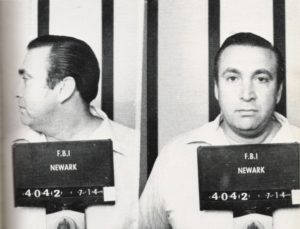
In the early ’80s, the FBI began investigating DeMeo’s crew in conjunction with a number of missing and murdered people as well as automobiles thefts. The Gambino family boss, Paul Castellano, was concerned about the attention this could bring to the organization and ordered DeMeo killed. Allegedly, Castellano first asked John Gotti and his brother, Gene, to carry out the hit before asking DeMeo’s own crew to do the job. On January 20, 1983, his body was found in the trunk of his car with multiple gunshots to the head. Although details surrounding his murder remain unknown, infamous hitman Richard “The Iceman” Kuklinski later confessed to killing DeMeo.
As an accomplished hitman, DeMeo owned a large collection of sharp weapons as well as firearms and explosives. But without any evidence that the ice pick or machete were used to commit a crime, they would not have been seized or tested by criminal investigators during DeMeo’s lifetime or after his death.
At the time, DNA profiling was an unknown forensic technique. The methods used to identify individuals based on their DNA fingerprint were developed by British geneticist Alec Jeffreys in 1984. Before then, blood evidence was tested for blood type, but that test was not particularly effective at narrowing down numerous suspects.
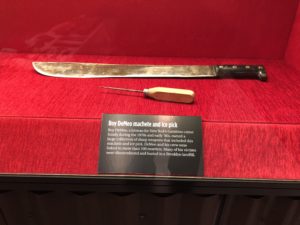
In subsequent years, the number of methods available in the fields of forensic science have increased exponentially. Armed with that knowledge, and two possibly bloody weapons, the Mob Museum decided to reach out to the Las Vegas Metropolitan Police Department’s Forensic Laboratory to see whether it would be possible to test them. Hoping to discover long-lost forensic evidence, we were able to schedule a time to take the tools into the crime lab and test them.
Two crime scene analysts walked us through the process and tested the machete and the ice pick for blood. Tabatha Paine, senior crime scene analyst, examined the machete first. She quickly identified the same areas of reddish-brown staining that could be blood but warned that rust and dried blood often looked similar. She also explained that as blood dries, it flakes off, so when looking at something with potentially days- or decades-old blood, it is important to look in grooves and crevices, as these areas are more likely to retain residual traces long after it has dried. In the case of the machete, one of the areas that seemed the most promising was an engraved bulldog at the base of the blade. Paine and her colleague, crime scene analyst Glezzelle Tapay, identified a few areas to swab for blood and prepared the samples for a phenolphthalein test.
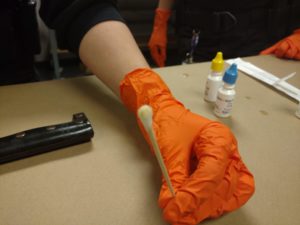
Phenolphthalein is a presumptive test. It is used to determine whether something could be blood, but further tests must be used to determine definitively. Presumptive tests cannot conclusively determine whether a sample is the substance in question.
On crime scene investigation shows, luminol is the most common chemical used to test for blood. It is recognized as a quick and effective way to test for the presence of blood at the scene. Luminol reacts to blood by producing a light blue luminescence. It is used to detect blood that has been cleaned up and is otherwise invisible to the naked eye. It is easy to apply over a large surface, but it does react to other substances, including some chemicals used in cleaning. If a smaller area is in question or a red substance presumed to be blood is in need of testing, luminol is a less efficient way to test for blood. In that case, phenolphthalein is a more popular choice for forensic scientists.
When checking for blood with phenolphthalein, negative and positive controls are first tested. We watched as Paine first dripped phenolphthalein on a negative control cotton swab (without blood.) Nothing happened, which is the correct outcome for the negative control. Then she dripped phenolphthalein and hydrogen peroxide on a positive control, a cotton swab with hemoglobin, the substance that causes a chemical reaction with the phenolphthalein. The tip of the cotton swab turned bright pink almost immediately.
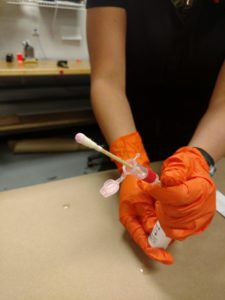
We watched anxiously as Paine then took the first cotton swab that had been rubbed against the machete, rehydrated it with distilled water, and then again, dripped phenolphthalein and hydrogen peroxide. Nothing happened. It retained its rusty yellow-ish brown tint. Paine had prepared a few cotton swabs, each taken from different areas on the machete, but when tested, each in turn failed to transform into the bright pink color. The machete was not covered in blood.
Glezzelle Tapay took the lead with the ice pick, again looking for areas that could be blood based on their appearance to the naked eye. Tapay swabbed the base of the ice pick, where blood would have been harder to clean out. She followed the same procedure, first testing the controls before building up to the big reveal. But just like the machete, the swabs from the ice pick failed to turn pink.
Neither the machete nor the ice pick tested positive. If they had, further tests could have been initiated to determine whether the substance really was blood and whether it originated from a human or an animal. If enough blood had been positively identified, it is even possible to test decades-old blood for DNA, although it is highly unlikely to positively identify a DNA profile in these types of cases because of opportunities for contamination over the years.
But regardless of the outcome, this experience allowed the Mob Museum to experience the familiar rush that forensic scientists feel when they are piecing together evidence, testing a theory or chasing a lead. Perhaps the next artifact will provide a more compelling forensic story.
Feedback or questions? Email blog@themobmuseum.org





